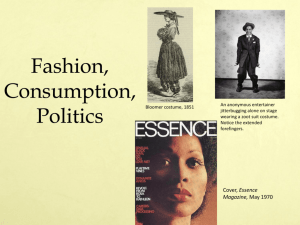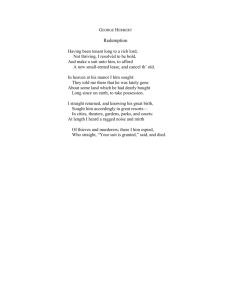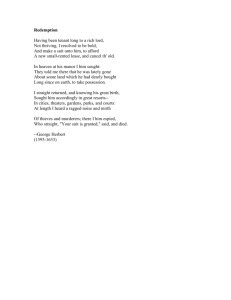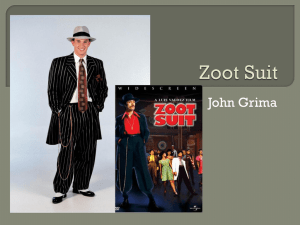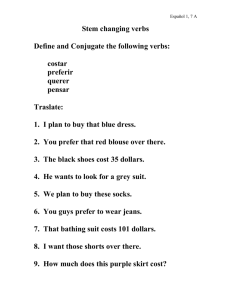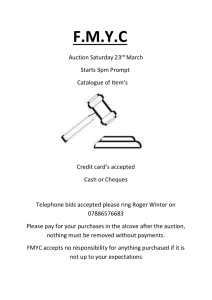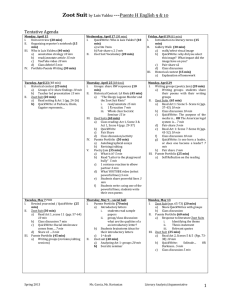A Nation on the Move (cont.)
advertisement
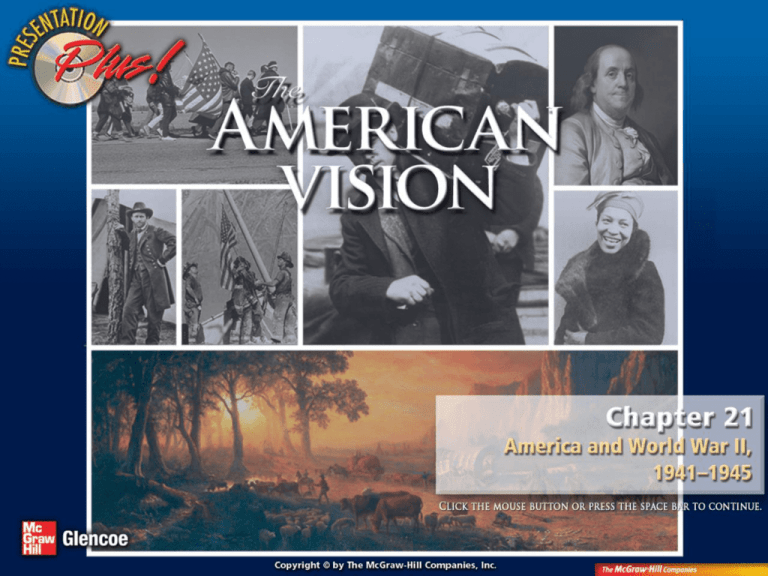
Chapter Introduction Section 1: Mobilizing for War Section 2: The Early Battles Section 3: Life on the Home Front Section 4: Pushing Back the Axis Section 5: The War Ends Visual Summary Big Ideas Trade, War, and Migration During World War II, Americans faced demands and new challenges at home. Content Vocabulary • Sunbelt • rationing • zoot suit • victory garden • victory suit Academic Vocabulary • coordinate • justify People and Events to Identify • A. Philip Randolph • Bracero Program • Great Migration • Office of Price Administration A Nation on the Move Million of Americans relocated during the war to take factory jobs or to settle in less prejudiced areas. A Nation on the Move (cont.) • To find jobs, nearly 15 million Americans moved during the war. – Most Americans headed west and south. – The growth of Southern California and the expansion of cities in the Deep South created the Sunbelt. A Nation on the Move A Nation on the Move (cont.) • In many ways, the most difficult task facing cities with war industries was where to put the thousands of workers arriving in their communities. – Congress passed the Lanham Act in 1940. – In 1942 FDR created the National Housing Agency (NHA) to coordinate all government housing programs. A Nation on the Move A Nation on the Move (cont.) • The “Great Migration” of African Americans to the North and West resumed during the 1940s. – However, they were often met with suspicion and intolerance, which sometimes led to violence. A Nation on the Move A Nation on the Move (cont.) • The zoot suit became a symbol of unpatriotic, waste of materials, while the victory suit was worn by the patriotic. – Many Mexican American teenagers adopted the zoot suit. – After hearing rumors that zoot-suiters had attacked several sailors, some 2,500 sailors and soldiers attacked teenagers in Mexican American neighborhoods for several days. A Nation on the Move (cont.) – However, racial hostility against Mexican Americans did not deter them from joining the war effort. • After the attack on Pearl Harbor, President Roosevelt signed an order allowing the War Department to declare any part of the United States a military zone and to remove people from that zone. A Nation on the Move (cont.) – Secretary of War Henry Stimson declared most of the West Coast a military zone and ordered all people of Japanese ancestry to evacuate to one of 10 internment camps further inland. – Fred Korematsu took his case to the Supreme Court, which they ruled that the relocation was constitutional. A Nation on the Move (cont.) – Shortly afterward, the Court ruled in Ex parte Endo that loyal citizens could not be held against their will. – In early 1945, the government began to release the Japanese Americans from the camps. – No Japanese American was ever tried for espionage or sabotage. What regions led the way in manufacturing and urbanization during World War II? A. The North and East B. The South and West A. A B. B 0% B A 0% Sunbelt a new industrial region in southern California and the Deep South, developing during World War II zoot suit men’s clothing of extreme cut typically consisting of a thigh-length jacket with wide padded shoulders and peg pants with narrow cuffs victory suit a men’s suit with no vest, no cuffs, a short jacket, and narrow lapels, worn during World War II in order to save fabric for the war effort victory garden gardens planted by American citizens during wartime to raise vegetables for home use, leaving more for the troops coordinate to harmonize or bring into common action, movement, or condition
